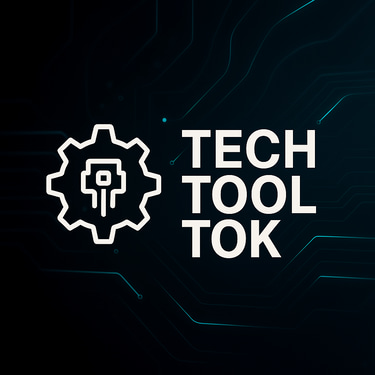A Beginner's Guide to Monetizing AI Chatbots for Business Revenue
8/15/20254 min read



Understanding AI Chatbots
AI chatbots have become integral tools for businesses aiming to enhance customer interaction and streamline operations. These virtual agents utilize advanced technologies to simulate human conversation, enabling organizations to provide round-the-clock support and engagement. At the core of AI chatbots lies natural language processing (NLP), which allows them to comprehend and interpret human language. By leveraging NLP, chatbots can discern user intent and provide relevant responses, creating a more intuitive user experience.
Machine learning (ML) is another fundamental component of AI chatbots. Unlike traditional rule-based chatbots, which operate based on predefined paths molded by human input, AI-driven chatbots employ ML algorithms to improve their interactions over time. These chatbots analyze data from past conversations and user behavior to learn and adapt, ensuring increasingly personalized and accurate responses as they gather more insights. This evolution from basic to intelligent chatbots highlights the significant leap in capabilities powered by AI.
Various types of chatbots exist, categorized primarily as rule-based or AI-driven. Rule-based chatbots are programmed to follow specific scripts, managing straightforward tasks like FAQs. In contrast, AI-driven chatbots utilize complex algorithms and are capable of engaging in dynamic conversations, handling multifaceted queries, and providing solutions tailored to individual user needs. This adaptability sets AI chatbots apart, making them indispensable tools in diverse industries, from customer service to marketing.
By understanding how AI chatbots function and their distinct components, businesses can leverage these tools to enhance customer experiences and drive operational efficiency. With their capacity to learn and evolve, AI chatbots are poised to play a vital role in the future of business communication, offering vast potential for revenue generation.
Key Ways to Monetize AI Chatbots
AI chatbots are rapidly emerging as essential tools for businesses aiming to increase revenue streams. The implementation of innovative strategies can transform these digital assistants into profitable entities. One of the primary methods for monetizing AI chatbots is through lead generation. By engaging website visitors in meaningful conversations, chatbots can gather essential information such as names and email addresses, which can be instrumental for future marketing efforts. For instance, a retail website may use a chatbot to ask potential customers their preferences, thereby capturing valuable data that allows for tailored follow-up communications.
Another significant strategy is customer service automation. AI chatbots are adept at handling commonly asked questions and resolving issues efficiently. By automating these processes, businesses can significantly reduce operational costs while enhancing customer satisfaction through immediate responses. For example, a tech support chatbot can troubleshoot basic problems, allowing human agents to focus on more complex issues, thus optimizing resource allocation.
Upselling and cross-selling products during conversations is yet another effective tactic. By analyzing user inquiries and preferences in real time, chatbots can recommend additional products or services. An example can be seen in an online travel booking platform where a chatbot suggests upgrades or related travel packages during the booking process, increasing the average order value with minimal human intervention.
Affiliate marketing also presents an opportunity for monetization. By integrating affiliate links within their interactions, chatbots can promote third-party products and earn commissions on successful referrals. This strategy not only diversifies revenue sources but also enhances user experience through personalized recommendations. Additionally, offering premium features through paid subscriptions can generate recurring revenue; businesses can design chatbots with basic functionalities for free users while charging for advanced capabilities, fostering a model of sustained engagement and monetization.
Setting Up and Hosting Your Chatbot with Hostinger
To successfully set up and host your AI chatbot, selecting an appropriate hosting service is crucial. Hostinger stands out as a top choice due to its exceptional speed, reliability, and robust security features. These attributes are essential when ensuring that your AI chatbot delivers a seamless experience to users across the globe.
The first step involves evaluating the various hosting plans available through Hostinger. Depending on the expected traffic to your chatbot and the complexity of its functions, you can choose from shared hosting, cloud hosting, or VPS hosting. Each hosting option has its own advantages; for instance, VPS hosting can provide dedicated resources that can significantly enhance your chatbot's performance, especially during peak times.
Once you have selected the right hosting plan, the next step is to integrate your AI chatbot with your website. Hostinger’s user-friendly interface simplifies this process. You will first need to create and refine your chatbot using a platform that allows you to customize its responses and functionalities. After your chatbot is ready, you can embed it into your website's code or leverage plugins that Hostinger supports. This facilitates a smooth integration, enabling potential customers to interact with your chatbot effortlessly.
After completing these steps, it is imperative to monitor your chatbot's performance regularly. Hostinger provides an array of tools and analytics that help in optimizing the functionality of your chatbot. By analyzing user interactions and feedback, adjustments can be made to improve responses and ensure user satisfaction. Additionally, taking advantage of Hostinger’s security features will protect your chatbot from potential threats, ensuring a reliable service for your customers.
Marketing Tips and Best Practices for Maximizing ROI
To ensure that your AI chatbot contributes effectively to generating business revenue, it is vital to implement targeted marketing strategies and best practices that maximize return on investment (ROI). First and foremost, promoting the capabilities of your chatbot is essential. Clearly articulate how the chatbot can solve specific problems, enhance customer service, and streamline operations. Use multiple marketing channels, including social media, email newsletters, and your website, to highlight the benefits and functionalities of your AI chatbot effectively.
Utilizing data analytics is another critical component in the optimization process. Regularly analyze user interactions and feedback to identify pain points and areas for improvement. Leverage analytics tools to track engagement metrics such as response times, conversation lengths, and user satisfaction ratings. This data not only helps in fine-tuning your chatbot's performance but also provides valuable insights into consumer behavior, enabling you to adjust marketing strategies accordingly.
Personalization plays a crucial role in enhancing the user experience and bolstering engagement. Tailor interactions based on user preferences and previous interactions, utilizing stored data to create a more engaging dialogue. This level of personalization can significantly improve customer satisfaction and drive repeat interactions. Additionally, it is essential to ensure a seamless connection to human agents when necessary. Some queries may overwhelm the chatbot’s capabilities, and providing users with an option to transition to a human representative can enhance overall user experiences.
Real-world case studies can provide inspiration and guidance on best practices for implementing AI chatbots. Companies like Sephora and Starbucks have successfully integrated chatbot technology, driving customer engagement and increasing sales. By studying their strategies and outcomes, entrepreneurs and small business owners can adopt proven techniques while adapting them to their unique business contexts. By outlining clear marketing strategies and continuously optimizing your chatbot, maximizing ROI becomes not just a possibility but a reality.

